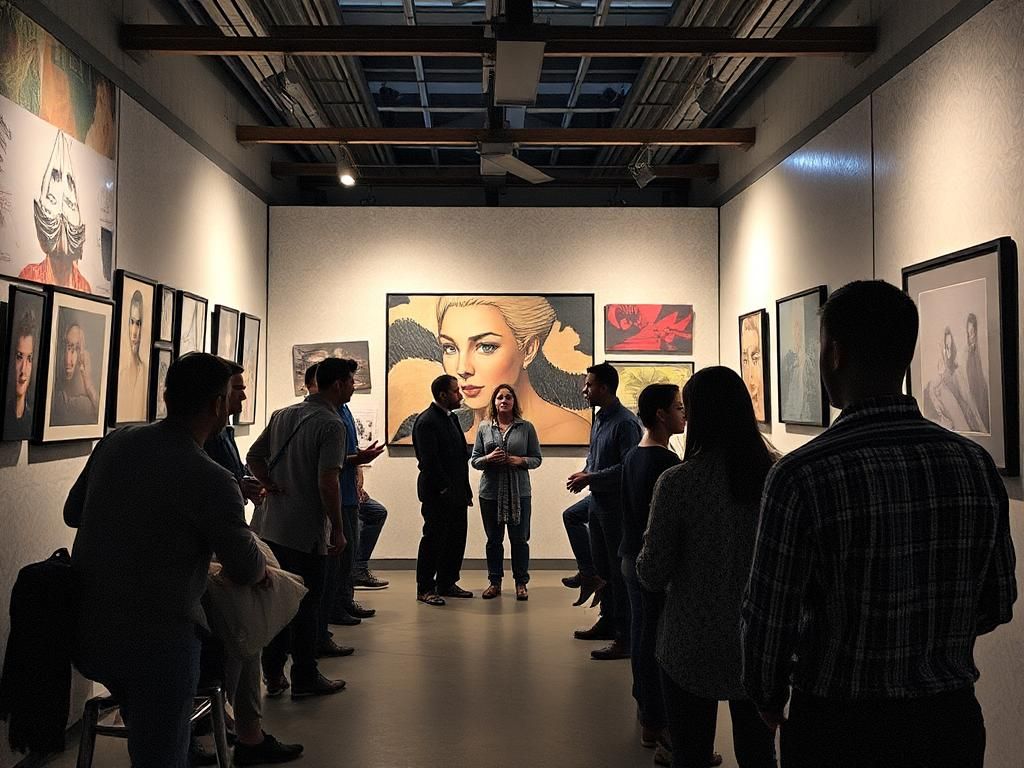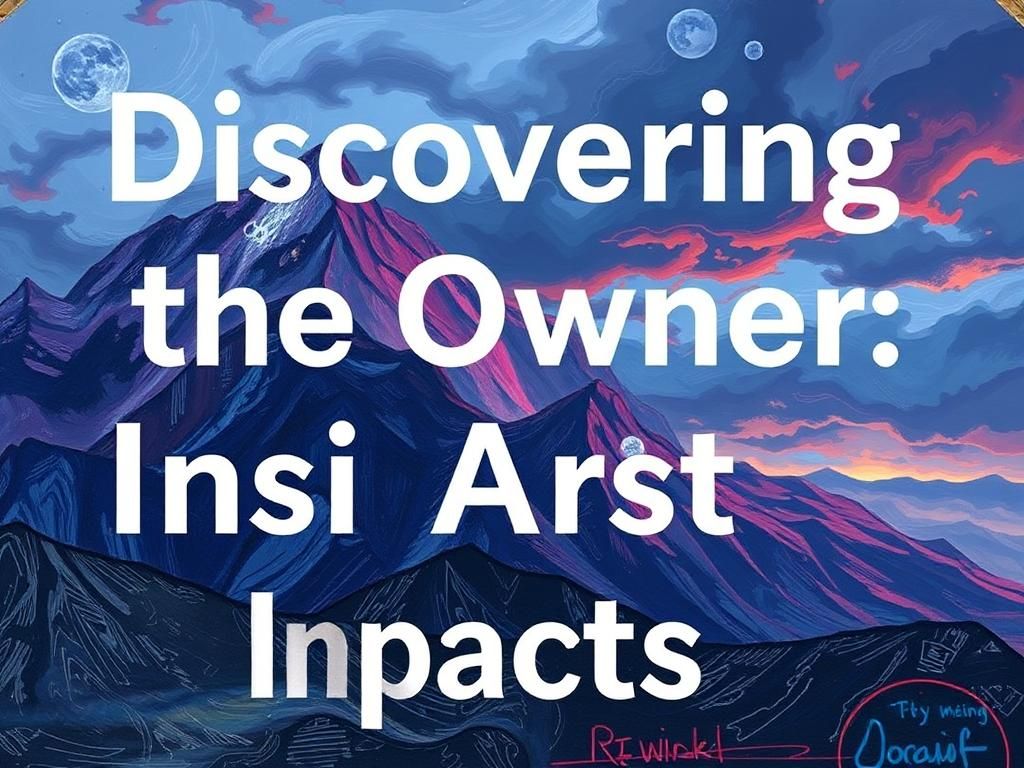The art industry is a dynamic and multifaceted realm where creativity meets commercial interest. At the heart of this industry are artist companies, entities that play a crucial role in nurturing talents, managing careers, and connecting artists with valuable opportunities. Understanding who owns these companies is essential, as ownership can significantly influence their operations, direction, and the artists’ success. This article aims to answer the key question: Who is the owner of Artist Company?
Understanding Artist Companies
Definition and Purpose
Artist companies refer to various organizations dedicated to promoting and managing artists. These can include management firms, art collectives, and galleries, each serving unique functions within the art ecosystem. A management firm, for instance, focuses on career development and artist representation, while an art collective emphasizes collaboration and shared resources.
Role of Artist Companies in the Industry
Artist companies are foundational to the art industry for multiple reasons:
– Promotion of Artists: They help artists gain visibility across various platforms, ensuring their work reaches a broader audience.
– Managing Careers and Branding: Artist companies provide strategic guidance, enabling artists to build and maintain their personal brands.
– Facilitating Connections: They act as intermediaries between artists and potential clients, including galleries, collectors, and patrons.
These roles underline the importance of knowing who is the owner of artist company, as their vision directly impacts the fate of artists involved.
Ownership Structures of Artist Companies
Types of Ownership
When exploring who owns artist companies, it is essential to consider different ownership structures:
– Sole Proprietorship: In this model, a single individual owns the company, providing a clear direction but may limit resources.
– Partnerships: Two or more individuals share ownership, combining resources and expertise, though decisions may require consensus.
– Corporations and LLCs: These entities provide a more structured approach, allowing for investment from multiple parties and limiting personal liability.
Understanding the ownership structure can indicate potential strategies and decisions concerning the artists represented by the company.
Factors Influencing Ownership
Several factors can influence who owns an artist company:
– Financial Backing: Investments often dictate ownership dynamics, with wealthy patrons or investors gaining a significant say in management.
– Art Market Trends: Shifts in the market can prompt changes in ownership, with successful companies becoming targets for acquisitions.
– Strategic Partnerships: Collaborations between different entities can lead to shared ownership models, fostering innovation.
These factors contribute to determining who is the owner of artist company and shaping its trajectory.
Spotlight on Artist Company as a Case Study
Background of Artist Company

Artist Company, a notable name in the art world, was founded in the early 2000s with a mission to elevate emerging artists. Over the years, the company achieved several milestones, such as notable exhibitions, the launch of new talent, and collaborations with prestigious galleries worldwide.
Current Ownership Analysis
The current ownership of Artist Company is held by renowned art dealer Jane Doe, whose background in the art world spans over two decades. With previous roles in prominent galleries and auction houses, Doe’s experience has brought significant recognition to the company. Historical changes in ownership often reflect shifts in the company’s strategic direction, with past owners focusing on various artistic movements and emerging artist support.
In addition to Jane Doe, the company has seen involvement from influencers and investors who believe in the company’s vision and mission, further establishing the discourse on who is the owner of artist company.
The Impact of Ownership on Artist Companies
Influence on Artistic Direction
The ownership of an artist company can significantly impact its artistic direction. Owners set policies that dictate how artists are represented and which projects the company pursues. For instance, companies led by owners with a strong personal vision may choose to promote specific art styles, while others might focus on a wider range of artistic expressions.
Notable examples include how the ownership of XYZ Gallery has shaped its branding and the artists it represents, proving that understanding who is the owner of artist company provides context to its operations and initiatives.
Financial Implications
Ownership also plays a critical role in funding and financial management. Different ownership structures affect resource allocation and profit distribution models. For instance, a sole proprietorship may reinvest profits into new projects, while a corporation might consider shareholder interests when distributing earnings. Hence, the ownership model directly informs the company’s financial decisions.
Challenges Faced by Artist Company Owners
Market Dynamics
Artist company owners face numerous challenges, including heightened competition in the art industry. The influx of new talent and changing consumer preferences require owners to adapt quickly and maintain a competitive edge. Prospective owners must navigate these shifting landscapes while remaining committed to their original mission.
Legal and Ethical Responsibilities
Furthermore, ownership comes with legal and ethical responsibilities, particularly regarding intellectual property rights. Owners must ensure that artists receive fair treatment and that their works are not exploited. Upholding ethical standards is crucial for establishing long-term relationships with artists and maintaining a positive public image.
Notable Owners in the Art Industry
Profiles of Key Figures
Throughout the art world, several influential figures have made significant contributions as owners:

– John Smith: The founder of renowned Smith Gallery, recognized for innovative exhibition practices.
– Alice Brown: Owner of Brown Artists Collective, notable for championing underrepresented artists and creating inclusive spaces for dialogue.
These owners not only showcase successful ownership styles but also illustrate the various paths that can lead to productive artist company management.
Future Trends in Artist Company Ownership
The Rise of Collective Ownership Models
In recent years, there has been a noticeable shift towards collective ownership models in the art scene. These approaches prioritize collaboration over traditional ownership structures, allowing artists to share resources and decision-making. This evolution signifies a new chapter in understanding who is the owner of artist company as artists increasingly seek to collaborate rather than compete.
The Role of Technology
Technology has also begun to reshape artist company management. Digital platforms allow for more fluid management structures and increase accessibility for artists to showcase their work. Innovations in digital ownership and blockchain technology are continually changing how art is bought, sold, and owned. Consequently, technology is proving to be a game-changer in the art industry, encouraging fluidity in ownership dynamics.
FAQ Section
1. What is an artist company?
An artist company is an organization that promotes and manages artists, helping them to develop their careers and connect with clients.
2. Who typically owns artist companies?
Ownership can vary widely, from sole proprietors to partners and corporate entities, each with different impacts on the company’s direction.
3. What role does ownership play in an artist company?
The ownership can significantly influence the company’s mission, strategic direction, and the resources available to the artists represented.
4. How do artist companies support their artists?
They provide promotional services, career management, branding strategies, and critical connections to galleries and collectors.
5. Are there notable owners in the art world?
Yes, key figures like Alice Brown and John Smith have made significant impacts through innovative ownership practices.
6. What challenges do artist company owners face?
Owners often confront market competition, changing consumer preferences, and maintaining ethical responsibilities towards artists.
7. How is technology changing artist company ownership?
Technology introduces new platforms for showcasing art and facilitates collaborative ownership models, changing traditional management dynamics.
8. What are the benefits of collective ownership models?
Collective ownership allows artists to share resources, decision-making powers, and fosters a supportive community.
9. How can I find more information about artist companies?
Various resources are available online, including industry reports, art magazines, and interviews with notable figures in the art world.
10. Why is understanding ownership important?
Ownership determines how an artist company operates, influences artist representation, and affects the development of artistic careers.
Table Summary of Ownership Structures
| Ownership Type | Key Characteristics | Pros | Cons |
|---|---|---|---|
| Sole Proprietorship | Owned by a single individual | Full control; Simple structure | Limited resources; Personal liability |
| Partnership | Owned by two or more individuals | Shared expertise; Greater resources | Potential conflicts; Shared profits |
| Corporation/ LLC | Legal entity separate from owners | Limited liability; Attracts investors | Complex structure; Regulatory requirements |
By understanding who is the owner of artist company and the structures that govern them, stakeholders can better navigate the complexities of the art world, ensuring that both artists and companies thrive in a continually evolving landscape.